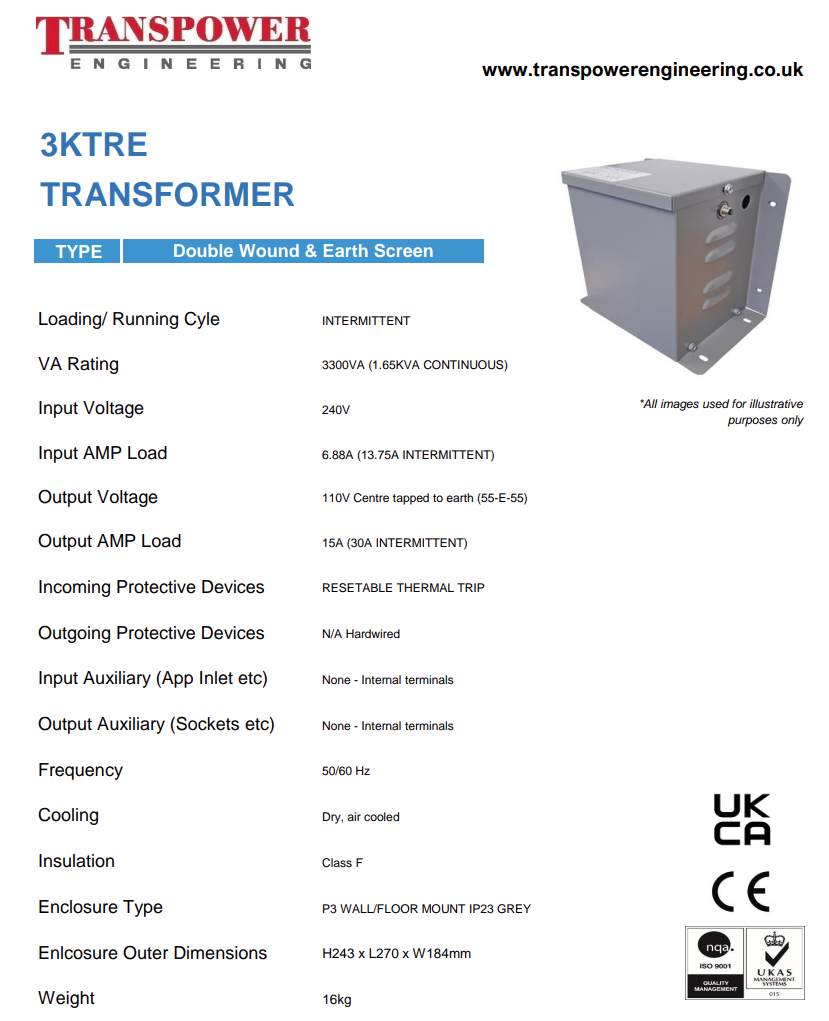Can someone confirm if in place of FUSE 1 ca be used 25A RCBO Type D and in place of FUSE 2 16A MCB Type C please?
Wall mounted transformer is 3.3kVA 230V/110V as per the below snapshot.
Will 4mm2 singles H07 be fine on the primary and secondary side of the transformer if we don't consider any major voltage drop?

